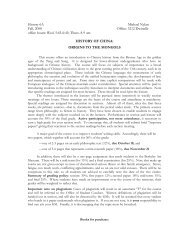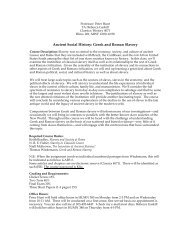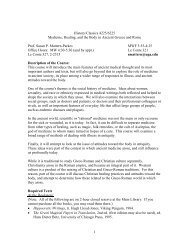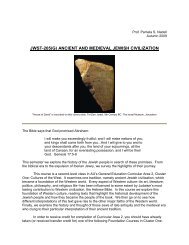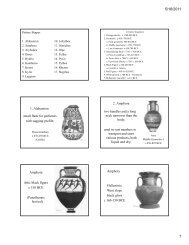Crime And Punishment In Ancient Greece
Crime And Punishment In Ancient Greece
Crime And Punishment In Ancient Greece
- No tags were found...
Create successful ePaper yourself
Turn your PDF publications into a flip-book with our unique Google optimized e-Paper software.
FORMS OF EXECUTION<br />
The death penalty was prescribed for men and women for intentional<br />
homicide, treason and sacrilege, and for men for adultery, seduction and<br />
malfeasance in office.<br />
Early sources speak about people being thrown into the barathon (a type of<br />
pit), but it is not clear whether this was a method of execution or a place<br />
for disposing of bodies of criminal.<br />
From the fifth century BCE onwards, the most common means of execution<br />
in Athens was the plank (tympanon), a piece of wood to which the<br />
condemned person was strapped by iron bands around the neck, wrists<br />
and ankles. The plank was raised upright and the condemned died<br />
slowly over a period of days.<br />
Some offenders convicted of capital crimes were granted the “privilege” of<br />
self-execution, perhaps by hemlock.<br />
<strong>In</strong> Classical Athens, capital punishment was frequently named as the<br />
possible penalty, yet there seem to have been relatively few actual<br />
executions. Exile for intentional homicide was permanent.



